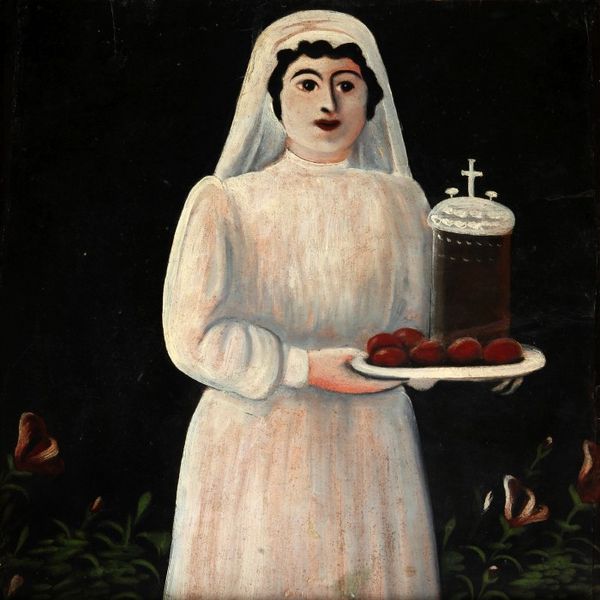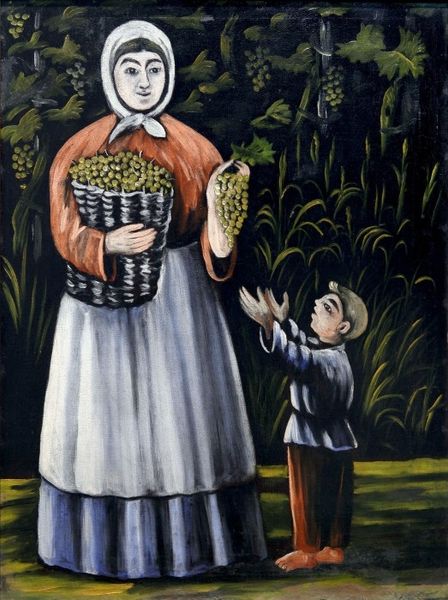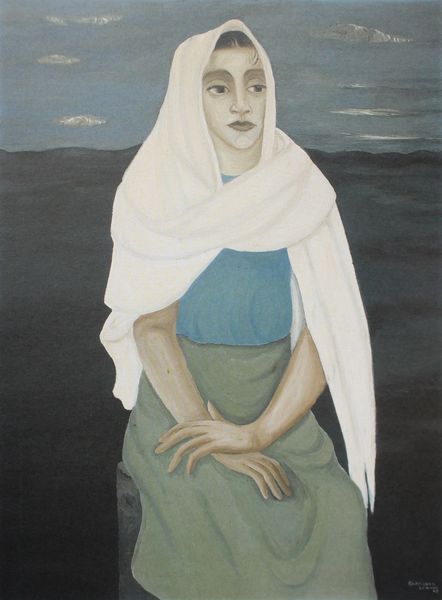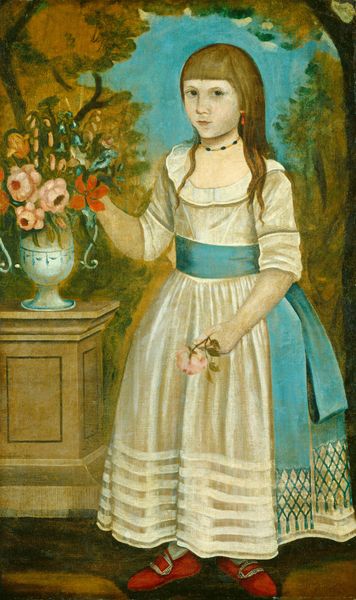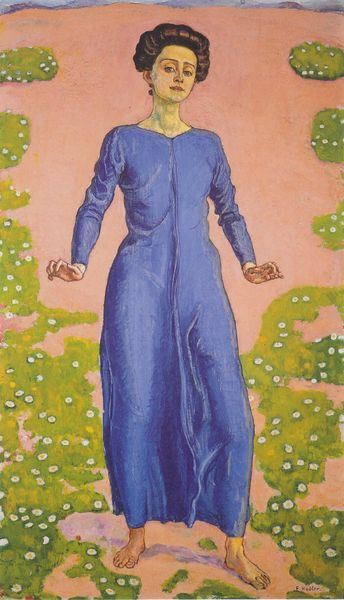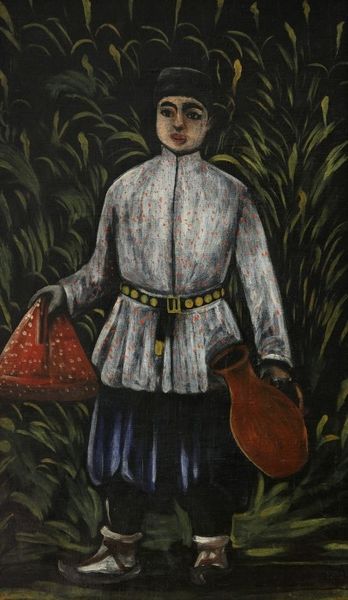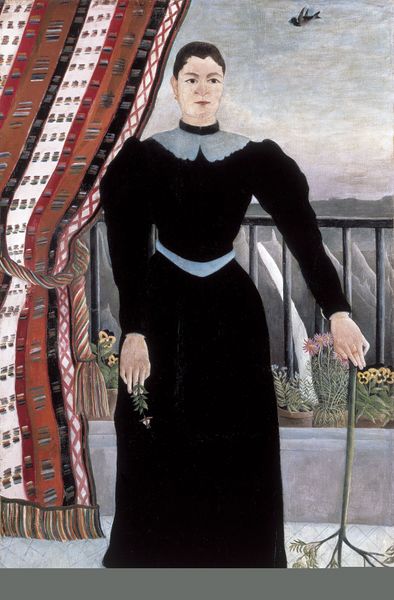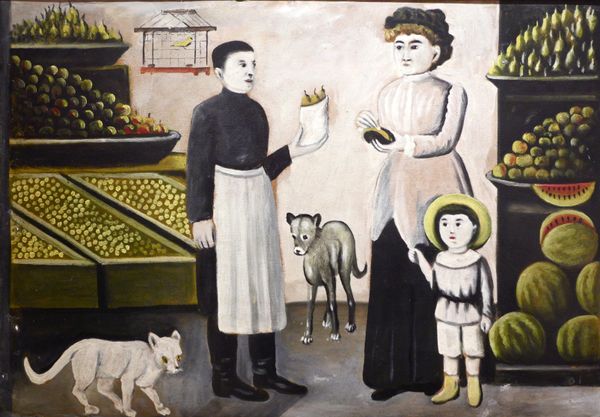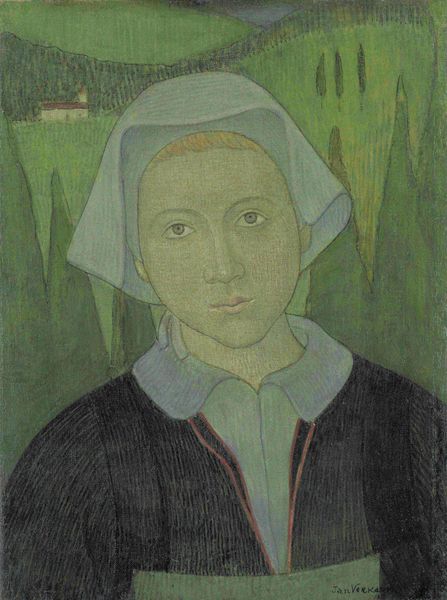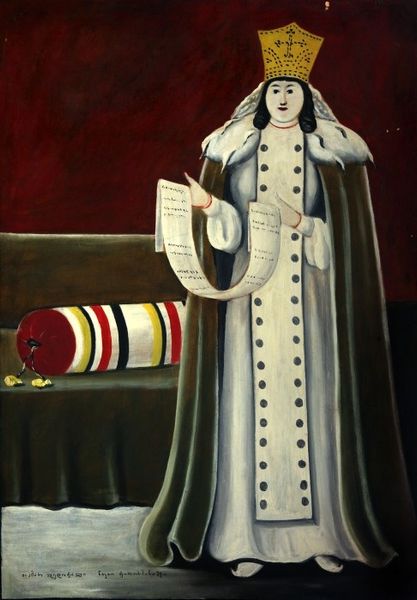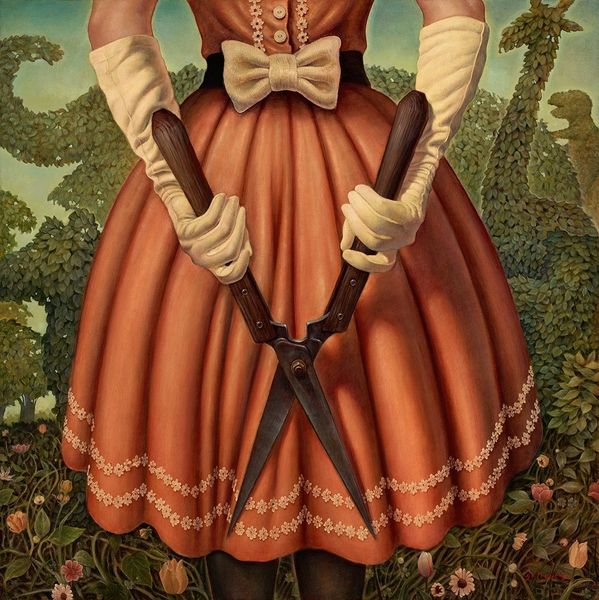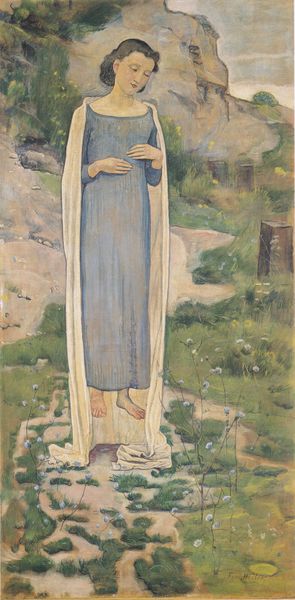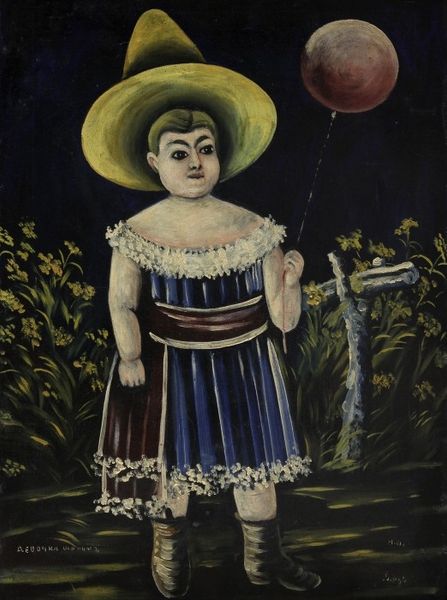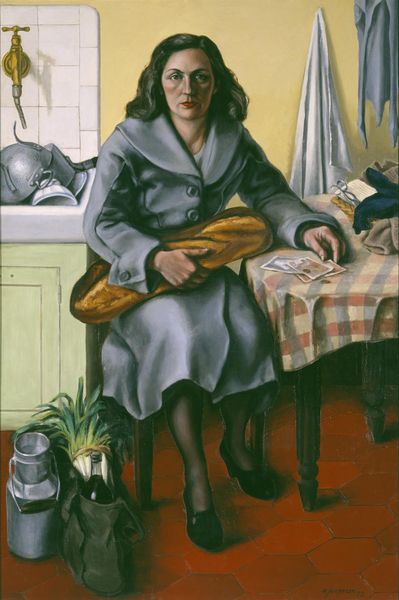
painting, oil-paint
#
portrait
#
painting
#
oil-paint
#
oil painting
#
genre-painting
Copyright: Public domain
Curator: Niko Pirosmani's "Woman with Easter Eggs" presents us with an intriguing composition, rendered in oil paint on, in some instances, waxed canvas. The painting depicts a woman dressed in white, holding a plate laden with vividly red Easter eggs. Editor: There’s a disarming simplicity to this work. It has a kind of austere dignity, a focus on form and, despite the celebratory subject matter, evokes a slightly melancholic feeling in me. Curator: Indeed, that emotional weight might stem from Pirosmani's approach to materiality. He was largely self-taught, using affordable materials that were commercially available – often foregoing traditional priming methods. How might such constraints speak to class dynamics or production within the Georgian art world at the turn of the century? Editor: Absolutely. Given the broader historical context of early 20th century Georgia, this image reads as complex. The eggs themselves represent a potent symbol of rebirth but juxtaposed against the somber, almost severe, figure of the woman. This begs the question: who is this woman and what are the socio-economic narratives interwoven into the gifting and exchange of Easter eggs at that moment in Georgian society? Are these offered freely or are they laden with an implicit obligation? Curator: It’s important to consider the context of Georgia. During Pirosmani’s time, Georgia underwent dramatic social and political upheavals, moving from imperial influence to nascent independence. I think it crucial to think about the availability and value of material to him. We need to carefully consider his processes and means to fully contextualize this portrait. Editor: Precisely. I read this painting as an invitation to critically unpack celebratory iconography itself and the unacknowledged women whose labor may have rendered such occasions possible. Curator: That resonates, given the way he often worked for commission from taverns and shops—his art intimately tied to commercial transactions and urban life. A tension arises between folk art traditions, popular culture, and fine art aspirations, perhaps mirrored in the visual contrasts we are drawn to. Editor: A really fascinating insight. It reframes our experience entirely. Curator: Agreed. Thinking about the work, and Pirosmani's process, illuminates how materials and method create narratives alongside the figures represented. Editor: And through a closer examination of socio-historical forces, combined with formal choices, a deeper understanding of his imagery is brought to light.
Comments
No comments
Be the first to comment and join the conversation on the ultimate creative platform.
